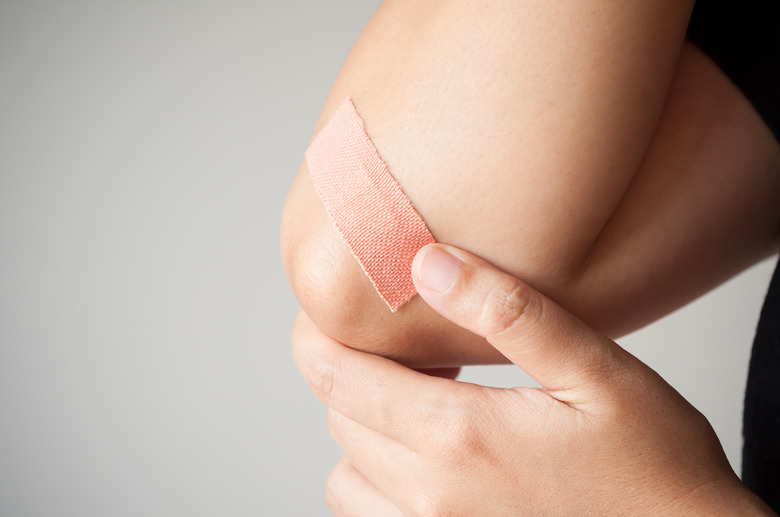How Does Skin Regenerate?
Bodies are often compared to machines, but unlike machines, your body and its organs can regenerate in response to injury, poisoning or other trauma. The degree to which this occurs varies from organ to organ; for example, liver tissue and skin possess remarkable regenerative abilities. Scientists continue to learn more about how, for example, keratinocytes in the epidermal skin layer proliferate in response to local damage. Your skin's regenerative capacity is critical given its role in serving as a protective barrier between your internal organs and an often hostile outside world.
TL;DR (Too Long; Didn't Read)
The skin possesses three layers: the deepest layer is the subcutis, which is beneath the dermis, and the outermost layer is the epidermis. Each layer of skin regenerates in response to injury using a different process. After an injury to the skin, white blood cells move to the wound, followed by various immune cells, and then other cells follow. The epidermis' deepest layer, called the stratum basale, begins to regenerate with a proliferation of its cells, which move to fill up any empty space left by the injury. Fibroblasts in the dermis move from the edges of the wound into the interior, where they secrete matrix fibers to fill in the wound.
Skin Basics
Skin Basics
Your skin consists of three layers. The outermost of these is the epidermis, which consists chiefly of cells called keratinocytes. These cells form several layers of their own, and as keratinocytes grow and mature, they migrate from the bottom of the epidermis to the surface of the skin. The next layer, the dermis, lies beneath the epidermis. Thanks to its density of collagen and elastin fibers, the dermis is what gives your skin its real substance. Your skin's nerves and blood vessels course through the dermis. Finally, the even deeper subcutis houses fat that serves as a fuel source as well as a cushion in the event of falls and other trauma. Each of these layers is capable of regeneration, but the process differs from layer to layer.
Initial Response
Initial Response
When something happens to disrupt the integrity of your skin to the extent that it has to regenerate, your body's immediate response is inflammation. White-blood cells leak out of local blood vessels into the wound, which could be a scrape, cut or burn. Next, various immune cells – including T-cells, Langerhans cells and mast cells – release chemicals called chemokines and cytokines. These substances draw other cells, such as macrophages, to the area. The result of this cascade is the release of nitric oxide and other substances that drive the initial stages of angiogenesis, which is the creation of new blood vessels to replace any that were damaged in the precipitating incident.
Regeneration of the Epidermis
Regeneration of the Epidermis
Repair of damage to the epidermis starts with the deepest part of the epidermis — the stratum basale. The first stage of regeneration involves proliferation of the cells of the stratum basale itself. Once this is finished, all that's required is for the cells of this layer to continue to divide and migrate upward to fill whatever space remains above. In the case or more superficial cuts, bleeding is absent and the process merely begins with the proliferation of cells of the intact stratum basale.
Regeneration of the Dermis
Regeneration of the Dermis
Injuries that penetrate through the epidermis all the way to the dermis set in motion a process distinct from epidermal regeneration. The most important cells in this process are called fibroblasts. These are highly mobile cells, so they can move from the healthy portion of the dermis at the edges of the wound into its interior. Here, they secrete matrix fibers – chiefly collagen and elastin – that form the substance of the regenerating dermis. Meanwhile, macrophages act as scavengers, crawling about and engulfing scab material and anything else that constitutes waste.
Cite This Article
MLA
Crystal, Mike. "How Does Skin Regenerate?" sciencing.com, https://www.sciencing.com/skin-regenerate-4566222/. 25 April 2018.
APA
Crystal, Mike. (2018, April 25). How Does Skin Regenerate?. sciencing.com. Retrieved from https://www.sciencing.com/skin-regenerate-4566222/
Chicago
Crystal, Mike. How Does Skin Regenerate? last modified March 24, 2022. https://www.sciencing.com/skin-regenerate-4566222/
